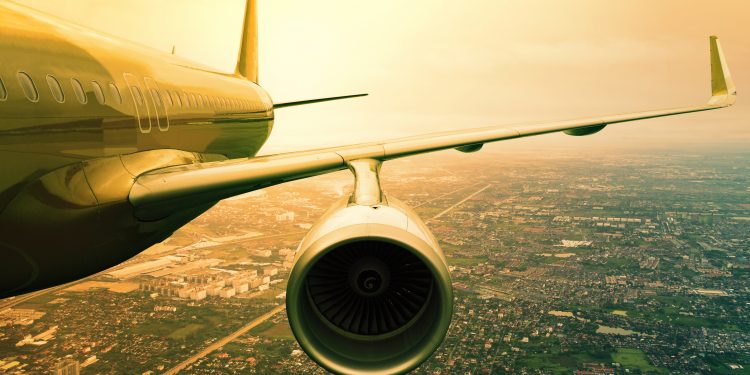Mexico has a well-developed and extensive network of airports and airline companies operating domestically and internationally
With nearly two million square kilometers of territory, flying across Mexico is sometimes a better alternative to ground transport, as it can take many hours—or days—to travel the long distances by car or bus
Domestic Flights in Mexico
Mexico has an extensive network of airports and Mexico City has, for many years, been the “hub” for airline travel in Mexico; although in recent years, new point-to-point routes between popular regional cities and resorts have been diminishing the capital city airport’s role as travel hub and negating the need for passengers to fly from a destination to Mexico City and then out to the final second destination as was often necessary in years past.
Domestic airfares in Mexico have ceased to be the bargain they once were. Occasionally airlines will run special offers (you have to actively check online) but overall, “low cost” airfares have been rising gradually as markets mature, and the four main domestic carriers: Aeromexico, Viva Aerobus, Interjet, and Volaris have all moved to providing what the airlines term as “unbundled pricing” which means that the ticket price does not include things like baggage, seat assignment, or priority boarding—these once-included services are now optional extras, sold separately.
Airfares for transportation across less popular routes in Mexico, where only one domestic airline operates (or two, with one of the two offering a very limited schedule), can still be expensive—like the situation that existed before the market was opened-up to competitors.
Mexican Airlines: You can find a list of airlines in Mexico here (Wiki)
Airports in Mexico
Mexico is well served by dozens of airports. Important cities in major tourist locations and industrial centers have large modern airports, many of which offer international connections, and there are also many smaller airports; some of the smallest ones do not cater for commercial flights although they do provide facilities for small private craft and charter flights.
Facilities Offered at Mexican Airports
Main airports in Mexico are modern and offer a wide range of amenities and facilities for travelers, on-par with airports in other major cities around the world.
Stores, Bars and Restaurants
As with most airports around the world, you will find a selection of stores, bars and restaurants offering food and refreshment while you wait. Bigger airports also include international franchises like Starbucks coffee shops and those with international flights offer a Duty Free store as well.
WiFi Internet Access
Most commercial airports across Mexico offer internet over WiFi, either free or through one of the major Telco access plans. Also see Communications in Mexico.
Car Rental Agencies
Bigger airports have car rental agencies on site to receive customers who have pre-booked as well as for passers-by to rent cars on the day. You will get better rates by booking in advance online. See the Mexperience guide to Car Rental in Mexico.
ATMs and Money Exchange
All major airports offer ATM services, where you can withdraw money using debit and credit cards; Money Exchange kiosks are also available. In Mexico City, you will get excellent exchange rates for cash currency at the airport kiosks; in other cities, particularly big tourist cities, the rates may be better in town. See also: Money in Mexico and the Blog: A Fair Exchange for more details.
Authorized Taxis
All of Mexico’s principal airports have an “authorized taxi” stand. Taxis from airports are the most expensive in Mexico; although this is also true of taxis from airports world-wide. To get a taxi from the airport, follow the signs to the ticket kiosk (Taxi Autorizado), purchase your ticket and proceed to the taxi rank, where an official will ‘assign’ you a taxi from the waiting cars. Uber and other App Cab companies are now operating from some Mexican airports – check your App for details.
Airport Transfers
If you’re arriving in Mexico by airplane, you can book your airport transfer in advance. Airport Transfer services are available from all of Mexico’s main airports and offer the choice of either a Standard or VIP service level. Standard shuttles will transport up to ten people and their baggage in a modern and comfortable suburban van to/from local hotels; the VIP service provides transportation exclusively for your party, taking you and your belongings directly to/from your local hotel.
Bus Station at Mexico City’s Airport
Mexico City’s airport has a bus station adjacent. You can take a bus from Mexico City’s airport direct to some popular colonial cities including Cuernavaca, Puebla, and Queretaro. Buses also depart from here to the airport in the city of Toluca, from where other low-cost flights operate. For a wider choice of destinations, you will need to travel from the airport to one of Mexico City’s four bus stations. See Traveling by Bus in Mexico for more details.
Executive Lounges
Mexico’s major airports offer executive airline waiting lounges. Most major airlines have lounges installed at Mexico City’s airport; some offer lounges in other key cities across Mexico, although the ones situated at smaller airports tend to have limited opening hours. Check with your preferred airline to see if a lounge is available at the airport in Mexico you are traveling to and from.
Internal Point-to-Point Flights in Mexico
Point-to-point travel is not always possible on the main commercial airlines: you have to fly back to Mexico City and then out to the provinces again to get to your desired destination.
With the advent of market deregulation, point-to-point flights are increasing rapidly, providing better access to Mexico’s smaller airports without having to fly via the capital.
Mexican Airlines: You can find a list of airlines in Mexico here (Wiki)
Toluca Airport, just outside the capital and within a 45-60 minute drive of the city center, is becoming an important hub for low-cost carriers, although prices from Mexico City’s main airport have adjusted accordingly to compete. For passengers’ convenience, the low-cost airlines provide comfortable buses between Toluca Airport from Benito Juarez Airport (Mexico City’s main airport) as well as other strategic points around the capital city: check their web sites for details.
Mexico City’s airport authority has an extensive plan to continue decentralizing flights in/out of Mexico City by making significant investments in strategic regional airports within a couple of hour’s drive of the capital.
Tip: Although traveling through Mexico City airport to get to your final destination can be time-consuming, the airport is modern and has all the amenities you would expect; a stay-over may be alleviated by use of food and drink establishments, craft and curio shops as well as duty-free items (if you are leaving the country). Flight transfers are efficient and there is no need to leave the airport if you don’t want to.
Low Cost Airlines in Mexico
Low cost airlines began to appear in earnest around 2005. Before their advent, domestic flight prices in Mexico were quite high—often prohibitively high—and this is one of the factors which sparked the development of Mexico’s very professional national bus network.
As elsewhere around the world, low-cost airlines in Mexico offer no-frills, affordable air travel to the mass travel market. Low cost carriers primarily offer point-to-point travel inside Mexico. Their services are already giving travelers access to more of Mexico by making it affordable to fly domestically between cities which were previously only served by national airlines at heavily inflated prices.
As a result of the low-cost carriers, the bigger airlines and particularly Aeromexico have lowered fares on popular routes which are served by at least one low-cost carrier. However, fares on routes not served by the low-cost players, to often smaller or less frequented towns and cities, continue to be comparatively expensive in relation to the more popular routes.
One of the side-benefits of a more competitive domestic flight market in Mexico (open skies agreement, low-cost airlines, etc) is that destinations and regions in Mexico which have much to offer visitors but which were hitherto difficult to get to because of high travel costs (or long road trips) are becoming more accessible to Mexican and international visitors alike. This, in turn, is creating new investment in communities which were regarded as ‘off the beaten track’.
Mexican Airlines: You can find a list of airlines in Mexico here (Wiki)
Planning Your Flights in Mexico
Aeromexico continues to have a network of offices and ticket sales counters in larger towns and cities in Mexico. However, the best prices are now only available online, by purchasing through the airline’s web sites.
Low-cost and regional airlines have offices and ticket counters at the airports they serve, but all ticket sales are made online or by telephone. Purchasing the tickets in person at the airport may incur an additional service fee.
Mexican Airlines: You can find a list of airlines in Mexico here (Wiki)
To get the best prices, shop online and plan ahead using these three tips:
First – Check to see if the journey you want to take may be covered by a regional point-to-point airline, within Mexico or from/via the USA. Aeromexico operates regional flights through its subsidiaries, Aeromar and Aeromexico Connect, and the schedules for these are coded in to their main booking systems, so you can find them using their web site’s online reservation systems. Compare prices with point-to-point alternative low cost carriers, where available.
Second – Consider renting a car and drive the regional leg of your journey; you can find extensive advice about renting a car in Mexico here on Mexperience. Mexico is a big country and driving can take longer than you may expect—so if you choose this option, ensure you build-in plenty of time.
Third – You may want to take a bus instead. Mexico’s national bus network is a world away from, for example, the USA’s Greyhound and the UK’s National Express bus services. On many long-distance routes, you can ride a luxury bus with just 24 seats on board: much like business class on an airline. Some companies and routes even have a crew on board serving light snacks and soft drinks. See the guide to Traveling by Bus in Mexico for full details.
Flying Times in Mexico
Approximate Flying Times from Mexico City to:
- Acapulco – 55 Minutes
- Aguascalientes – 45 Minutes
- Cancun – 90 Minutes
- Chihuahua City – 75 Minutes
- Guadalajara – 60 Minutes
- Huatulco – 85 Minutes
- La Paz – 120 Minutes
- Los Cabos – 120 Minutes
- Los Mochis (for Copper Canyon) – 75 Minutes
- Merida – 90 Minutes
- Monterrey – 75 Minutes
- Morelia – 45 Minutes
- Oaxaca – 60 Minutes
- Puerto Vallarta – 90 Minutes
- Veracruz – 45 Minutes
Airlines Serving Mexico
Mexican Airlines: You can find a list of airlines in Mexico here (Wiki)
Many international carriers have daily flights into Mexico City and other key Mexican cities, including its popular resorts of Cancun, Puerto Vallarta and Los Cabos.
Major US airlines serving Mexico include: American, United, Delta, Southwest Airlines and JetBlue
Major European airlines serving Mexico include: British Airways, Air France, KLM, Lufthansa and Iberia
See Also: Getting to Mexico
Mexico in your inbox
Our free newsletter about Mexico brings you a monthly round-up of recently published stories and opportunities, as well as gems from our archives.


